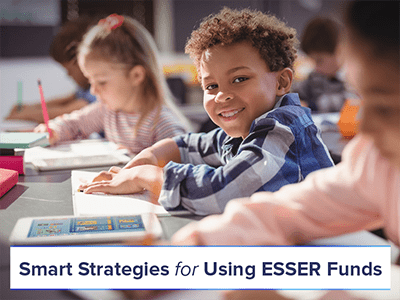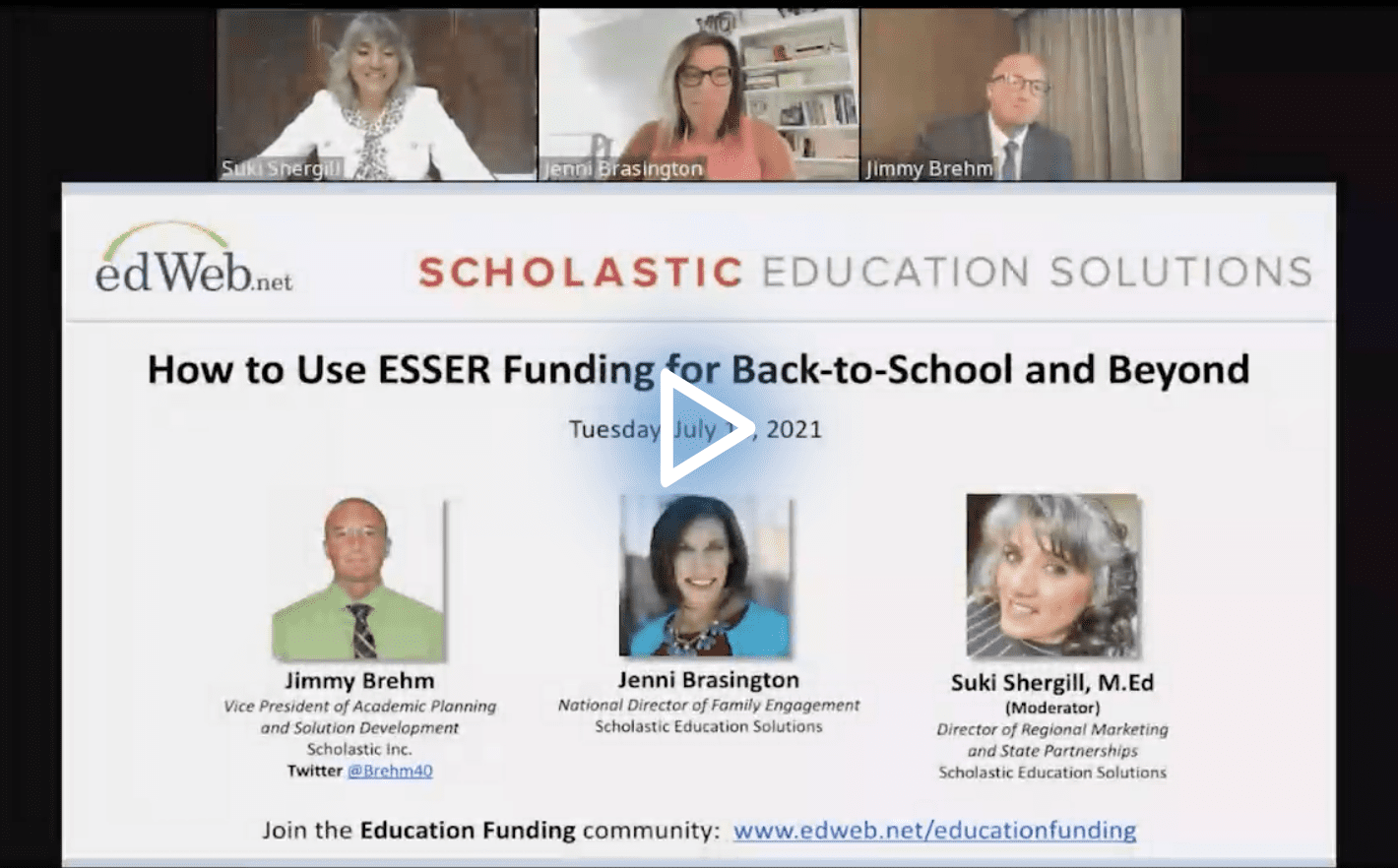Using ESSER Funding for Back-to-School and Beyond
Blog post by Eileen Belastock based on this edLeader Panel
The COVID-19 pandemic has impacted school districts, students, staff, and families in unprecedented ways. In response to the learning loss, reduced instruction time, and low student engagement, the federal and state governmental agencies allocated ESSER I, II, and III funds to districts to utilize over the next two to three years.
However, according to the presenters in a recent edLeader Panel, sponsored by Scholastic Education Solutions, the current allocation of ESSER funds to districts must match the community’s needs and place of learning. Districts will not have the opportunity to do everything that they would have taught over the last 18 months. Instead, the presenters say that districts can focus on the essential areas of learning loss for students to maximize time and impact.
Extended Learning
The Glossary of Education Reform defines extended learning as any program or strategy that increases the number of times students learn. Schools and districts must ask the following question when developing strategies to extend learning: “Do we need to extend the time for all of the students or, based on data, just focus on the students who are the most in need of that extended learning time?”
Four powerful strategies recommended by the presenters include increasing instructional time inside the school day, being intentional about supporting educators so that the learning time is highly engaging for students, targeting the skills most needed for acceleration, and including families in the planning process.
Digital
A question that often comes up is how ESSER funding can incorporate technology to support the learning loss issue. High-quality digital resources inside an extended learning program lend themselves to differentiate instruction and provide students with opportunities to reach an elevated level of learning through practice and personalized education.
The presenters recommend focusing digital resources in places where teachers most need the support and ensuring that the technology provides real-time data for interventions, supports learning paths, empowers teachers to make decisions on students’ next steps, and increases student engagement.
Learning at Home
Students, on average, are awake for 6,000 hours a year, with only 1,000 of those hours spent in school, and learning does not stop once the school bell rings at three o’clock. If school districts are going to tackle the achievement and opportunity gaps, it is incumbent upon them to be intentional around where students spend most of those hours.
One of those places is the home, so districts must partner with families in meaningful ways to support learning. They can transform and extend learning at home by prioritizing building trusting relationships with all families, elevating family engagement practice as an essential instructional strategy, and building capacity with educators to build strong partnerships with families to support learning at home.
This edWeb broadcast was sponsored by Scholastic Education Solutions.
Watch the Recording Listen to the Podcast
About the Presenters
Jimmy Brehm is currently Vice President of Academic Planning and Solution Development at Scholastic, supporting schools and districts around the country with creating and implementing high-quality literacy instructional practices. Prior to joining Scholastic, Jimmy was Chief Academic Officer at Woodford County Schools in Kentucky. He has over 15 years of experience in public education, excelling in roles such as Director of Curriculum and Instruction and Elementary School Principal. Jimmy started his career as a fifth-grade classroom teacher at Nicholasville Elementary School in Jessamine County, Kentucky.
Jenni Brasington is the national director of family engagement for Scholastic Education Solutions. She has more than 25 years of experience working in schools (PK-12) as an administrator, early childhood coordinator, and school counselor. Jenni holds a Bachelor of Arts in elementary education and a Master of Education degree in school counseling. She has focused her work over the last 20 years on assisting educators to engage with families in ways that support learning and increase student outcomes. She is the author of the Family Friendly Walk-Through and the co-author of the Family Engagement Assessment tools that measure a school’s capacity for developing effective home-school partnerships with families.
Join the Community
Education Funding is a free professional learning community on edWeb.net created to help educators and institutions uncover the funds they need to supplement shoestring budgets, expand innovative programs, prepare students for the increasingly complex skills they’ll need to participate in tomorrow’s workforce, and help close the equity gap in educating students from all backgrounds and circumstances.
Scholastic Education Solutions provides teachers, families, and communities with the tools they need to support each and every child with print and technology-based learning programs for pre-K to grade 12, expert professional development, family and community engagement, and learning supports.
Eileen Belastock, CETL is the Director of Technology and Information for Nauset Public Schools, MA, and also works with edWeb.net to write articles on their professional learning edWebinars. You can follow Eileen on Twitter @EileenBelastock.





Comments are closed.